Do you drive your car on the road and suddenly find yourself in situations when you have no more road to drive straight? That’s actually a T junction. Many people have no idea what a T junction is or how it works.
So, you should know what you can do at T junctions to avoid danger. Today you will learn all about what T junction actually is, its signs, types and legal standards you must follow.
T Junction Meaning or T Junction Road
T Junction is the zone of road where you will see one road end and join another road at right angles. This infrastructure makes a “T” shape design. That’s why it’s called T Junction or T Intersection. If you want to continue your driving, you must turn either at your left or right. You will see no more road ahead at a T junction. So, you can not move forward in a straight direction.
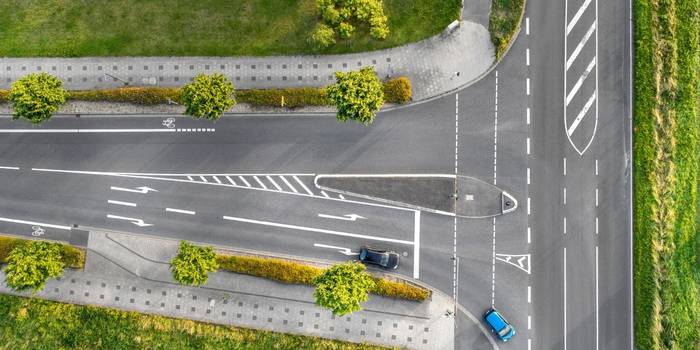
4 Types of T Junction
You will mostly find following main types of T-junctions based on their visibility, shape and how they manage traffic:
Open Junctions
The open junction is a type of T-junction where you can clearly see the main road. For example: when you reach the end of the road, both directions of the road will be visible to you. Hence, you don’t need to move your car forward much to see around you.
If you stop your car at an open junction, you must check for other vehicles from your left or right. So that you can take a safe turn at the junction. You will generally find open junctions in places which have good visibility such as wide roads & open areas.

Closed Junctions
If we talk about closed junctions, it is the area where you can not see the road properly. Because, there is something that blocks your view. These include: trees, walls, parked cars & buildings.
As the road is hidden, that’s why you have to drive your car slowly to look left & right sides. It’s hard for you to see if other cars are coming. Moreover, you should fully stop, now check your both sides. If you observe that the road is clear and safe, you can go.
Controlled T-Junctions
Sometimes, you may see traffic signs and signals installed at T junctions, known as controlled T junctions. For instance: stop signs, give way signs & traditional traffic lights. These signs basically help you to know when you can stop your car and when you have to move.
In such a way, signs and signals control the overall traffic flow at T junctions. If you drive at a controlled T-junction, you should follow signs instructions and wait for your right time to turn left or right.
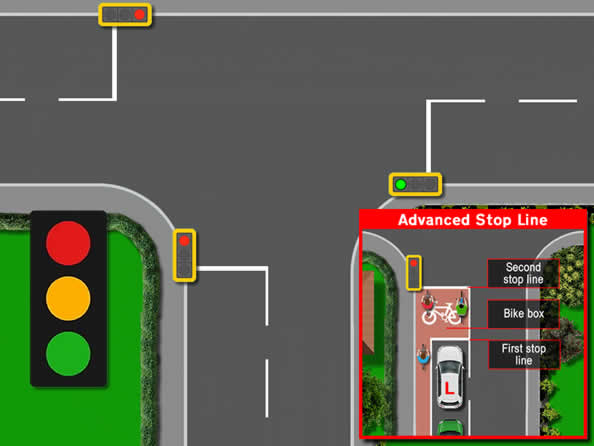
Uncontrolled T Intersection
Unlike a controlled T-junction, you will see no signs and traffic lights around uncontrolled T-intersections. Basically, all control is in your hands, because there are no stop or yield signs to guide you. Therefore, you need to follow basic road rules and be extra careful while driving your car though uncontrolled intersections.
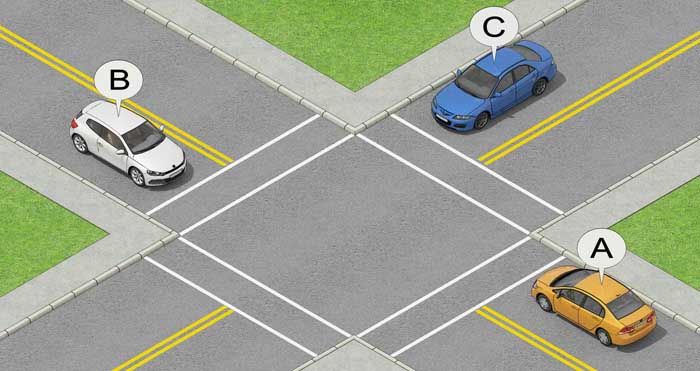
T-Junction Road Markings (T Junction Road Design)
T junctions road markings are actually lines and symbols which you may see painted on road at T junctions. These lines tell you about where you have to stop, which lane you can use and how you can safely drive.
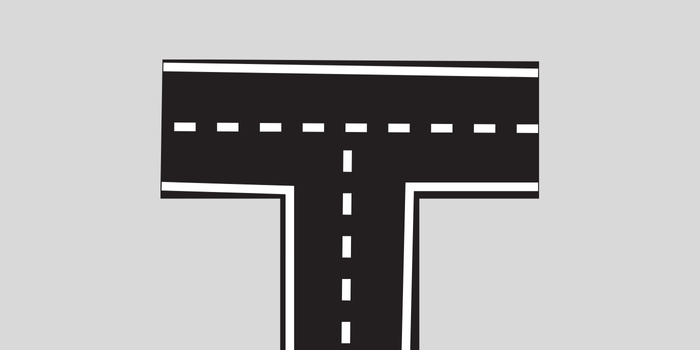
Marked T Junctions
When you notice clear road markings & visible symbols at intersections, it’s called a marked T junctions. Such junction designs are helpful for you to keep traffic in order, provide discretion for drivers and promote safety of pedestrians as well. Following are some types of markings you possibly find at marked T junctions.
- Generally, you will see white thick stop lines that tell you exactly where you can stop tour vehicles.
- Thinner and broken type lines are also painted at T junctions which provide you yielding indications. That means you must reduce your car speed and let other vehicles pass safely.
- The road has markings of turn arrows. These arrows show you in which directions (left/right) you can turn your automobiles.
- You also notice a center line that helps you to stay in your safe lane.
- There are pedestrian crossings that indicate where people are allowed to safely cross the road.
Unmarked T Junctions
Basically, unmarked T junctions have no signs and painted lines on the road. You will find no stop lines, no arrows & no give way signs. As a result, you need to use your eyes, your judgment and follow the basic road rules.
You will find unmarked junctions mostly in rural areas where traffic flow is always low. Below are some precautions you can take to drive safely in such zones.
- Slow down your vehicle as you reach the junction.
- You must look at both ways to identify incoming cars on the main road.
- Now, you should wait for a safe gap to turn your car left or right.
- You also need to give way to traffic on the main road.
T Intersection Sign/T Junction Sign
You may observe yellow diamond shaped boards with a large letter “T” on it. Basically, it is the sign of the T junction which you see before you reach the actual junction. These signs warn you that your current road will end and you have to choose the right or left direction.
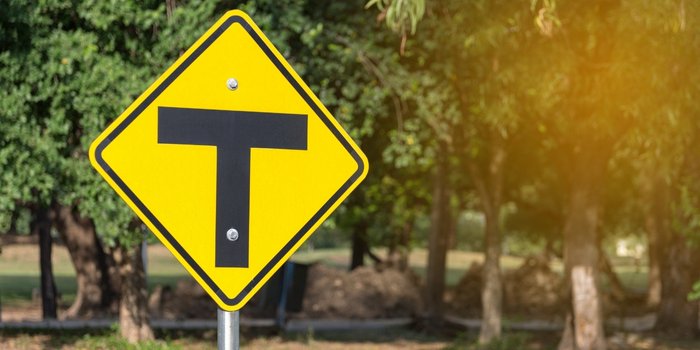
T Junction Ahead Sign
This sign is placed where the road you are on is about to end at T junction. Whenever you see “T Junction Ahead Sign”, you should minimize your vehicle speed and also be prepared to turn to the left or right side. Plus, you need to obey the following instructions.
- Keep your hand on steering for better control.
- Turn on your car signal lights.
- Follow road markings indications too.
- Use your car mirror to see other vehicles behind you.
- Carefully observe pedestrians & bikes on roads.
- Now, watch your both sides and move forward if you feel no danger.
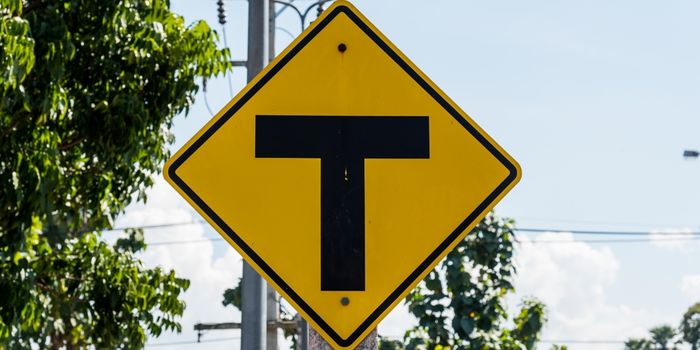
T Intersection Without Stop Sign
You probably think about T junctions where you see no stop signs. Actually, this shows the same thing as uncontrolled T junctions. That means, you are the only one who is responsible for safe driving and secure turns.
How To Emerge At a T-Junction?
To join another road, when you need to decide to take a left or right turn, known as emerge at T junction.
How To Turn Left at an Intersection?
When you join another road by turning your car on the left side is called a left turning T junction. To take a safe turn, you must keep in mind following steps.
Get Ready Early: You must reduce your car speed when you are as far from junctions as if ten cars were lined up in front of you.
Turn On Your Left Signal: Furthermore, you have to switch on your left signal to indicate to the other driver that you are going to take a left turn.
Move Your Car Into Position: If you have enough space, you should try to stay close to the left side of the road. Otherwise, you can position your car in the middle of the road.
Yield to Pedestrians: When you see walkers who want to cross the road near a junction, let them pass first.
Adjust Steering wheel: Now, gently move your steering at the left side to exit the intersection.
Join Road: Well, you can enter the main road. But, you have to make sure there is enough space between you and other vehicles present on the road.
How To Make Right Turn at Intersection?
If you want to take a right turn at T junction, below are instructions you need to follow.
Look in Your Mirrors: Monitor your center and right mirror to spot other vehicles behind you.
Use Right Signal: You must turn on your right signal to let drivers know your turning direction.
Take Positions/Stop or Slow Down: Now, it’s time to move your car to the right side, reduce your speed and completely stop if required.
Turn Your Vehicle: Shift your direction safely to the right side road according to flow of traffic on main road.
Continue Normal Driving: You can drive at normal speed once you have joined a new road.
Final Assessments: Further, you should look in your car mirror again to make sure that your signal is off and you’re on a safe lane.
T Junction Right of Way Or T Junction Priority
Right of way rule is implemented to reduce the risk of vehicle crashes and confusions. If we talk about who has right of way at T junction, the cars on the main road have the right of way & priority.
So, it’s compulsory for you to stop your car, wait and allow them to cross the road first in any situation. Always remember, if you see no stop signs, you still don’t have the priority to overtake vehicles on a straight road.
Which Driver Should Yield at an Uncontrolled T Intersection?
As you know, an uncontrolled T intersection means you will find no stop signs & traffic lights. So, who can move first? Well, if you are on the road that ends, actually you have to yield.
That means you must wait and allow other cars to pass before you take a turn. Additionally, the cars already on the road don’t have to stop. In short, the vehicles on the straight road will go first and cars on the road that ends must wait.
T Junction Road Rules
The FHWA (Federal Highway Administration) sets clear standards for T junctions which you have to follow.
- When you install a stop sign, you must paint a stop line at least 4 feet (1.2 meters) before the traffic lane. But, when you use yield signs instead of stop signs, you can add road markings (triangle, dashed).
- The main road view from intersections should be clearly visible to drivers. You should be able to see a 4.25-foot tall object on the main road, if you are sitting in your car at a height of 3.5 feet.
- The side road must connect to the main road at 90° (right-angle). So, you can easily judge traffic flow.
- At busy T-junctions, FHWA also recommends you to use a special design called the continuous green T or “seagull” design.
Do You Have To Stop At T Junctions?
Yes, you might have to stop at a T-junction. However, you need to behave according to the situation such as the presence of signs, red lights and give way standards. In case you find a stop sign or you can’t see road people then you must fully stop. Otherwise, you just have to slow down your car and can go when the road is clear.
Purpose and Road Uses of T Junctions
Well, the major purpose to build T junctions is to connect a minor road to a main road. This helps you to move your vehicles safely between different streets. T junctions also help you to control traffic order, change your direction safely and reduce accidents. You will generally T junctions at following places.
- City Streets: You will often see T junctions in busy city areas where small roads meet big main roads.
- Countryside Roads: When you drive in the countryside, you observe that small roads end at a highway or a big road. That’s where you will also find a T junction
- Villages and Towns: In small villages & towns, you have fewer roads to drive. Hence, T junctions are made to connect those few roads to make your movement easy between your homes & shops.
- Industrial Areas: Also, factories and big work zones use T junctions to help your trucks plus workers join highways.
- Schools or Parks: You will see intersections near your schools and park areas. It allows you to slow down traffic flow and cross streets.
Final Comments
To sum up, you can say T junctions have a major role in traffic organization & protect people too. You also see, when you carefully follow all signs and rules, you can prevent yourself from dangerous situations. If you want further details about T junctions or are looking for junction signs supplier, you can contact us today.


-80x69.png)

